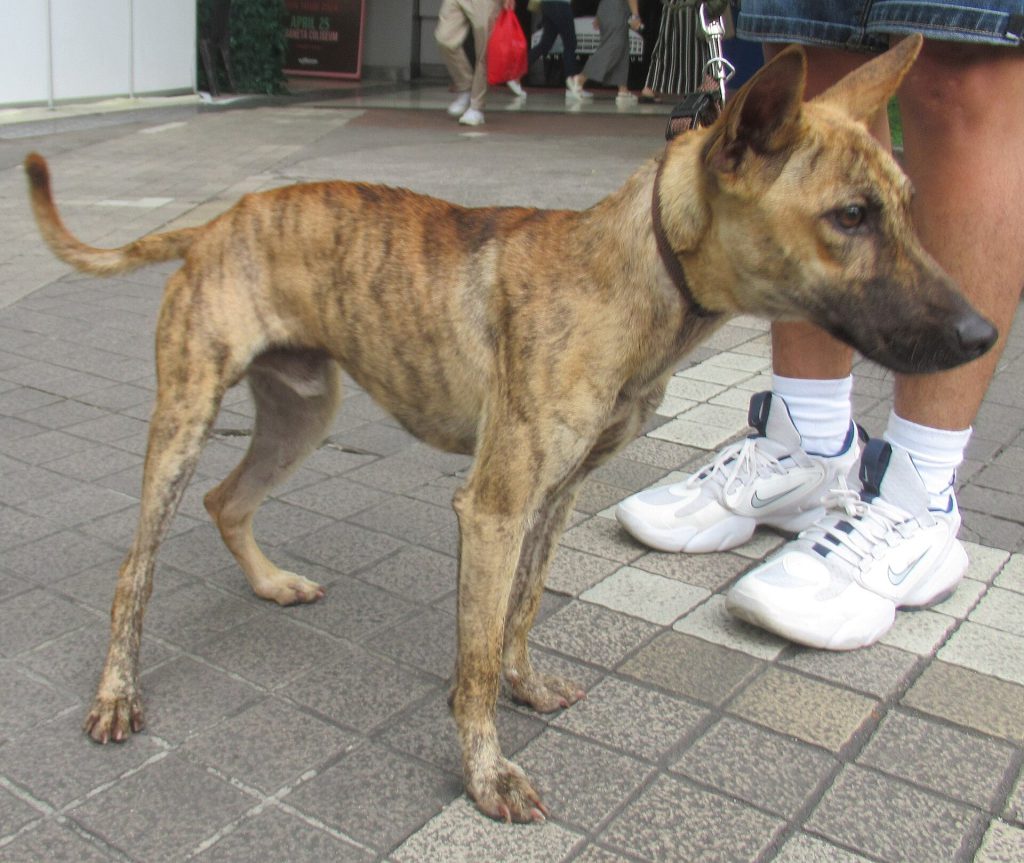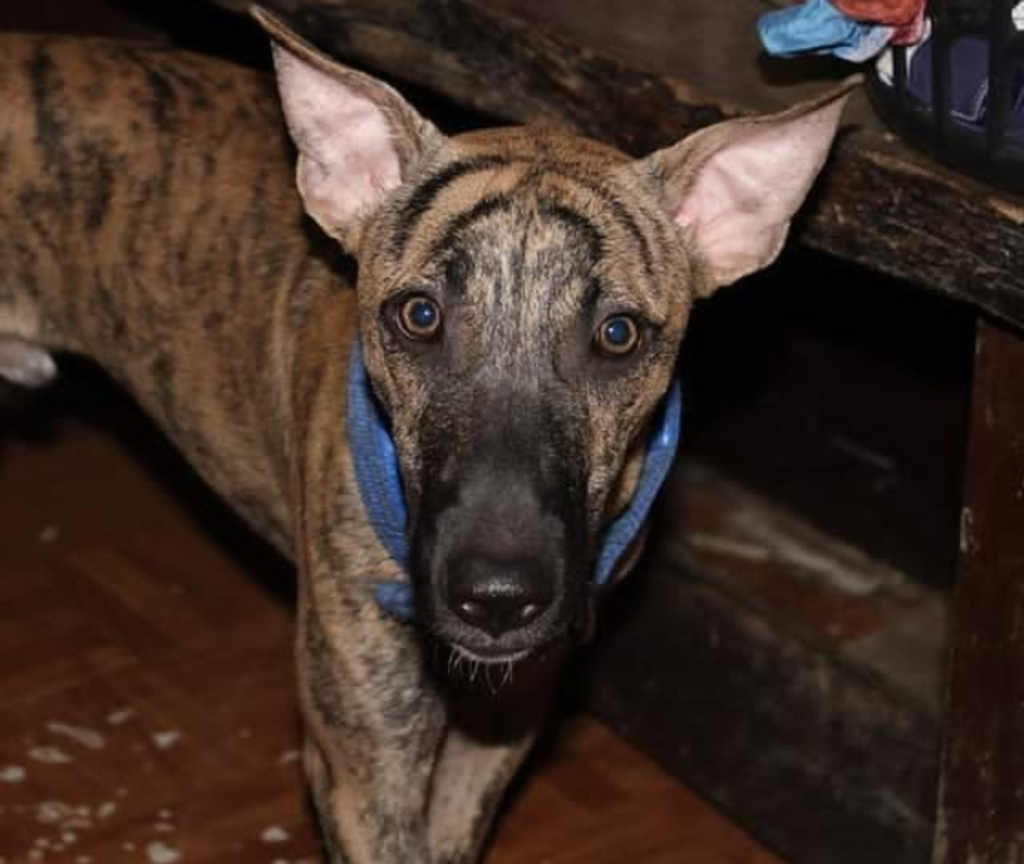
The Philippine Forest Dog or asong gubat is believed to be one of the oldest native dog types in the Philippines, with roots tracing back thousands of years — long before imported breeds arrived with the Spanish.
Some historians and biologists suggest it may share ancestry with the New Guinea Singing Dog and other Southeast Asian landraces.
For centuries, they lived alongside indigenous communities, helping hunt small game, guard crops, and alert families to dangers in the forest.
Unlike imported dogs that relied on human care, the asong gubat learned to survive independently, blending into the rhythms of the wild while still forming quiet partnerships with humans.
Sadly, modernization, deforestation, and crossbreeding have made pure forest dogs increasingly rare.
But in recent years, researchers and advocates have started calling for official recognition of the Asong Gubat as a distinct native breed — a living heritage of the Philippine forests and the people who call them home.
Appearance: Built for the Wild
The asong gubat doesn’t look like a show dog — it looks like something nature designed herself.
The Philippine Forest Dog is believed to be a native canine species that adapted to the tropical forests of the Philippines long before imported breeds arrived.
Some call it a descendant of the ancient dogs kept by early Filipinos; others think it’s a close cousin of the askal, only wilder and more self-sufficient.

- Size: Medium, weighing around 12–18 kilograms.
- Body: Lean, muscular, with a straight back and strong legs.
- Ears: Always erect and triangular, ready to pick up the faintest sound.
- Tail: Slightly curved or curled, carried confidently.
- Coat: Short, smooth, and usually brown, black, or a mix of both — though lighter shades also exist.
- Eyes: Almond-shaped, intelligent, and always alert.
Their appearance varies slightly depending on the region, but the overall look is that of a dog built for endurance, perfectly adapted to the humid forests and rugged terrain of the Philippines. Their fur is short to resist ticks and heat, their paws tough enough for mud and stone, and their body agile enough to run, climb, and swim with ease.
Temperament: Wild Heart, Loyal Soul
What sets the asong gubat apart is its temperament — equal parts cautious, independent, and fiercely loyal. These dogs are thinkers. They observe before they act. They don’t bark without reason. When they do, it means something.
Once they bond with you, though, they’re family. They become protective in that quiet, no-nonsense way — not through constant affection, but through presence. They’ll follow you at a distance, guard your home from the shadows, and sleep near your door at night.
They’re not for everyone.
First-time dog owners might find them aloof or stubborn.
But for those who appreciate animals with spirit and intelligence, the asong gubat is deeply rewarding. They respond best to trust and consistency — not punishment or force. You don’t command them; you earn their cooperation.
How to Care for an Asong Gubat
Taking care of an asong gubat is not like keeping an imported dog. These dogs carry generations of instinct — they’re meant to roam, explore, and think for themselves. But with the right approach, patience, and respect, they can become amazing companions.
Caring for an asong gubat is like caring for a piece of the forest. You don’t tame it completely — you respect it, guide it, and give it room to thrive.
1. Shelter and Space
The asong gubat isn’t a lapdog.
It thrives in open spaces — farms, wide yards, or mountain homes. If you live in the city, make sure you walk them often and give them time to roam safely.
They’re also natural climbers and runners, so if you can, build a secure but open area where they can play and patrol. They love observing their surroundings, just like their ancestors in the wild.
They dislike confinement and can become anxious or aggressive if caged too long.
And a bored forest dog, or any dog for that matter, can get restless or destructive.
2. Diet and Nutrition
In the wild, asong gubat dogs survive on small prey, fruits, and whatever food they can scavenge.
Their natural diet is simple — lean meat, fish, rice, and fruits. You can feed them a mix of cooked food and good-quality kibble. Avoid salty, oily, or highly processed leftovers — their stomachs are strong but not invincible.
Always keep fresh, clean water nearby. These dogs can overheat quickly in the lowlands, especially with their natural thick skin and high energy.
3. Health and Basic Care
The Philippine Forest dog is hardy, but it does still need regular care. With that said, you’ll need to do these things regularaly:
- Deworm every 3 months.
- Vaccinate yearly (especially anti-rabies and 5-in-1).
- Check for ticks weekly.
- Bath every 2 weeks using mild soap.
They don’t need daily baths — once every two weeks is enough. Too much bathing can dry their skin. Use mild soap or vet-approved shampoo, especially during rainy months when they tend to roll in mud or grass.
They rarely fall ill, but when they do, they’re really good at hiding their weakness which is a deeply embedded survival instinct.
You should watch for subtle signs like limping, loss of appetite, or excessive scratching.
4. Training, Bonding and Companionship
You don’t “train” an asong gubat the way you’d train a golden retriever. You earn its respect.
These dogs respond better to consistency and calm confidence rather than force or punishment.
Positive reinforcement works best.
They’re not eager to please — they’re eager to understand.
Talk to them, feed them by hand in the early days, and let them watch you go about your daily routine. They observe more than they react.
Gentle consistency builds respect. Once an asong gubat trusts you, it becomes an extension of your life — watching your home, following your path, and keeping your secrets.
5. Shelter and Comfort
Despite their wild origins, these dogs love having a safe spot they can call their own — a shaded corner of the yard, a dry sleeping mat, or even a wooden crate lined with cloth.
They don’t like being chained for long periods. If you must restrain them, use a long leash and make sure they can still move comfortably.
The Push to Recognize the Philippine Forest Dog as a Native Breed
In recent years, animal welfare advocates and genetic researchers have been working to document and preserve the Philippine Forest Dog.
Groups like the Philippine Forest Dog Legacy Club and independent breed enthusiasts have called for formal recognition of the asong gubat as a true native breed, similar to how Japan honors the Shiba Inu or Thailand the Thai Ridgeback.
Recognition would mean not just status — but protection, breeding standards, and conservation programs to prevent extinction through uncontrolled crossbreeding. It would also give pride to Filipino pet owners who’ve long loved their native dogs but rarely seen them celebrated.
After all, this isn’t just an animal — it’s a piece of our cultural identity.
A reminder that before modern breeds and imported pets, we already had loyal companions born from our forests, molded by our climate, and faithful to our people.
The Asong Gubat as a Family Member
For families who’ve grown up close to the land, the asong gubat isn’t just a pet — it’s a partner. They help watch over chickens, warn against snakes, and even guide people along forest paths. In some mountain villages, these dogs are raised alongside children and treated like siblings.
They may not be affectionate in the usual “cuddle me” way, but their loyalty is deep and steady. You’ll notice it in the way they follow you from a distance, guard your door at night, or rest near your slippers after a long day.
The Forest Dog as a National Symbol
The asong gubat is more than just a dog.
It’s part of our natural heritage — the living echo of our ancestors’ bond with the land. While many of us now live far from the forest, these dogs remind us that nature still runs close beneath our skin.
If the carabao represents the Filipino’s hard work, then the asong gubat represents our resilience and intuition — that quiet, watchful spirit that keeps us grounded.
When you look into a forest dog’s eyes, you see something ancient.

A spark of wilderness that never left. And in caring for one, you carry a living piece of that story forward — proof that no matter how modern life becomes, the heart of the forest still beats quietly beside us.
Some people see them as mysterious or fierce, but to those who’ve shared a home with one, they’re gentle in their own way — quiet, observant, and endlessly loyal.
They’re not for everyone, but for the right person, an asong gubat can become one of the most meaningful companions you’ll ever have.
And maybe that’s the beauty of it.
The world has its polished, pedigreed breeds — but here in the Philippines, we have our forest dog:
Untamed, proud, and faithful to the very end.


